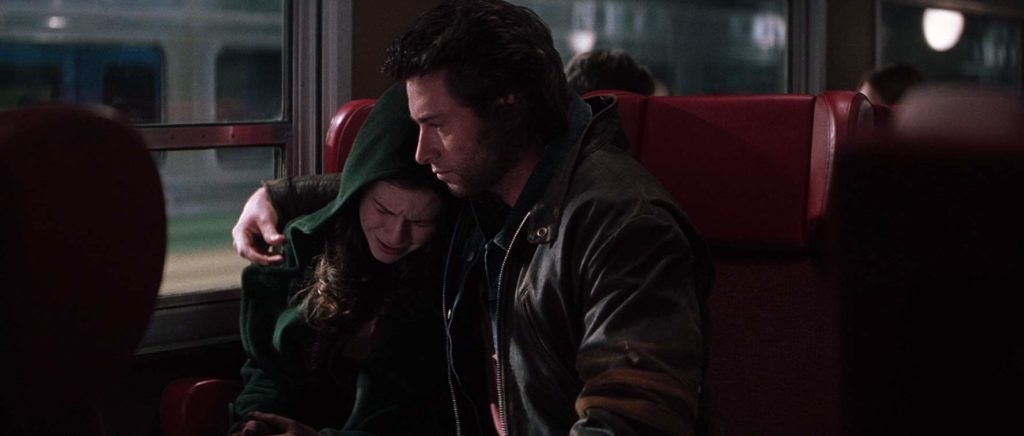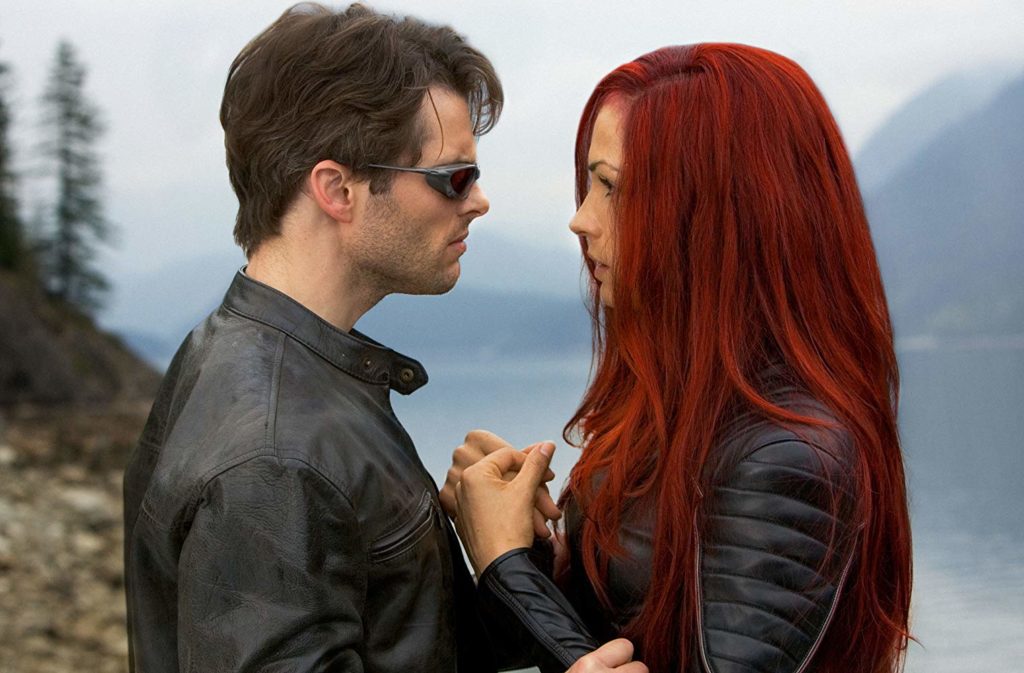Superhero films are at the edge of a new evolutionary stage. Avengers: Endgame marks the epic apotheosis of over 11 years, and 22 films, of storytelling, marking the next phase in a mighty comic book franchise. However, another more discrete climax also comes this year, as Dark Phoenix marks the final entry of Fox’s X-Men franchise, before the characters are reabsorbed by Disney to their comic book brethren.
The X-films have been the fascinating ‘third wheel’ of modern superhero films, holdovers from the early comic-book film craze of the 2000s that have slowly adapted to fit into the current genre they helped inspire. This franchise never quite captured the comfortable heights and formula of the MCU, nor the ambition and bizarre misfires of the DC films. Instead it has maintained its own odd pace, albeit frequently hampered by an overflow of characters and baffling lapses in continuity, as well as the multiple noteworthy accusations of sexual abuse against the leading director, Bryan Singer.

The colourful, melodramatic and diverse X-Men of the comics was never an easy fit for film, the material seemingly better suited for TV – something which can be glimpsed on FX’s The Gifted or even DC’s recent Doom Patrol. Yet when viewed as an independent franchise, instead of an adaptation, the X-films form a distinct subsection of superhero films that heightened the level of maturity expected from the genre.
Of course they were not the ‘first’ comic book films to attempt this, with Marvel’s Blade (1998) an important precursor. However, X-Men (2000)’s impact not only aborted one-shots like Daredevil (2003), it influenced the relative ‘authenticity’ of Batman Begins (2005) and even Iron Man (2008), before the MCU’s semi-realistic technology became fully fantastical. Examining the respective trilogies of X-films (the three originals, the three Wolverine films, and the three prequel films) will unlock not only the development of the franchise, but the overall evolution of the superhero genre.
X-Men (2000) opens with a downpour onto thick mud. An imprisoned boy is separated from his mother by guards, and as he screams while extending his mud-drenched arm, the barbed-wire gates begin to moan and creak in response, as if great invisible hands were pulling them apart. From the beginning, X-Men brutally establishes its world of hate and fear. Like the environment, the tone is generally muted and bleak, set in dank underground caves or harsh metallic vaults. Here, mutant powers are not a mystical gift but a physical burden, one deeply felt by those who possess them.
The relationship between touch and pain hang heavy over this first entry, from Senator Kelly (Bruce Davidson) being transformed into a rubbery mutant, to Rogue (Anna Paquin) comatosing her boyfriend by kissing him. She later asks her cage-fighting protector Logan (Hugh Jackman) whether his extendable adamantium claws “hurt” his regenerative knuckles. He replies, “every time”.

Despite the ultimate climactic battle atop the Statue of Liberty, X-Men works best as a quiet character study, the weight of its issues given particular depth and gravitas by the casting of mutant ideologues Magneto (Ian McKellen) and Professor X (Patrick Stewart). Issues remain, particularly with the pacing and underdevelopment of some characters (especially of the ‘established’ X-Men, Cyclops (James Marsden), Jean Grey (Famke Janssen) and Storm (Halle Berry), who never fully recover from this oversight), yet X-Men remains notable for its authentic grit. Such ‘grit’ is its most distinctive feature, and perhaps its most notorious, draining the source material’s vibrant colour and fun for most of the trilogy. The franchise never quite rebounded from Cyclops’ comment dismissing “yellow spandex” (something not necessarily any more impractical than black leather).
X-Men’s embarrassment about its comic book origins is what most outdates it now, alongside some dodgy special effects. It is uninterested in the spectacle and glamour of the source material. But X-Men remains invested in the people it presents, and shows glimpses of fantastic world-building through Cerebro and the Quinjet, which might nowadays seem relatively mundane for superhero films, but within the film tease fully formed super-heroics that are not quite ready to be shown. Indeed, here ‘the X-Men’ have no real origin (Stan Lee once said he created mutants so that he wouldn’t have to create new origin stories for powers), Wolverine merely stumbling upon a long-standing conflict. X-Men excels when keeping the scope intimate and focused, so the footing for the franchise can take hold.
Such advantages were seized by X2: X-Men United (2003), the strong middle-section of the first trilogy. While X-Men introduced the existence of mutants, X2 shows their need for survival, intensifying the allegory only briefly shown in the first film. Such social commentary is explicit when the mother of Iceman (Shawn Ashmore), discovering his abilities, asks him “have you tried not being a mutant?”. A subtler moment comes when nervous outcast Nightcrawler (Alan Cumming) asks fellow blue-skinned shapeshifter Mystique (Rebecca Romijn) why she doesn’t just always disguise herself as human. “Because we shouldn’t have to”, she responds. Nightcrawler is also responsible for the majestic opening fight scene, teleporting across the White House in delightfully choreographed puffs of smoke, in a mind-controlled assassination attempt on the President. All the action is stronger in X2, from Magneto’s prison escape to Wolverine’s fight against Lady Deathstrike (Kelly Hu) while pursuing the mutant-hating scientist William Stryker (Brian Cox).

Pacing remains an issue in X2, as the kidnapping of Professor X results in protracted scenes of an imaginary X-Manor (as he is being mind-controlled) that halt most of the momentum, albeit eventually resulting in a wicked inversion of Cerebro. The characters are also better balanced, even if the Wolverine-Jean-Cyclops love triangle is more told than felt. X2 holds the same limitations and serious tone of the original, but is more confident in its delivery as it builds from the groundwork lain by X-Men. It examines the impact of mutants in the world, toeing a careful balance between the fantastic and the grounded, and taking the franchise a great step forward.
This journey was finished by X-Men 3: The Last Stand (2006), which saw them appropriately faced with destruction by the near-omnipotent Phoenix (a resurrected Jean Grey), or neutralisation through a ‘mutant cure’. Helmed by new director Brett Ratner (as Singer had left to direct Superman Returns (2006)), Last Stand has been rejected by critics and fans alike, but rewatches find plenty of moments to enjoy. Yet again the film opens with a wonderfully memorable scene, as a young Angel (Cayden Boyd, the adult version by Ben Foster) tearfully tries to cut off his beautiful white wings. Such heart-breaking moments are peppered throughout the film, such as Magneto defending Xavier after his death by Phoenix, or Beast’s (Kelsey Grammar) stunned reaction upon seeing his temporarily human hand.
The set-pieces have also improved, notable when Magneto moves the Golden Gate Bridge, or Phoenix’s unstable telekinetic eviscerations. Last Stand’s issue is that no such ‘moments’ cohere into a greater whole. While the first X-Men featured strong characters with weak story and action, here the opposite is true. Phoenix and the ‘cure’ provide such morally complex threats, but outside some minor discussion, each is unsatisfyingly resolved, their tremendous potential squandered. Essentially, Last Stand lacks heart, the balance created by X2 spilling into an overstuffed mess that is unable to keep its multiple threads alive. The semi-realistic mutant team of X-Men now has a fully holographic Danger Room, and the once vulnerable Logan who hurt “every time” he extended his claws can now walk through a whirlwind of psychic lacerations relatively unharmed. Ultimately, Last Stand fails as a finale, even on purely technical grounds, its numerous deaths leaving little emotional (or literal) impact. The remainder of the franchise will try to ignore, or even wholly eradicate, Last Stand’s very existence.

This trilogy has aged strangely, telling its self-contained story in a franchise that has grown beyond it. X-Men started with such a determined, unique vision, but was slowly expanded into a fully-blown superhero film by Last Stand. While lifting key storylines, the films never quite matched the comics, instead focusing on its own internal developments. This did mean that while certain characters, like Magneto or Wolverine, stole the spotlight, some never properly manifested (like the three ‘established’ X-Men), and others never got a chance at all (Colossus (Daniel Cudmore) is part of the titular Last Stand, but also has no dialogue).
This trilogy was focused around who mutants ‘are’, whether they are defined by their past or their powers or their persons. Understanding the strength of their central characters of Magneto, Professor X and Wolverine, the X-films never quite progressed immediately past Last Stand, and instead split into two separate trilogies which chronicled these three characters, one a prequel trilogy examining the friendship-turned-rivalry of Professor X and Magneto, and the other three films (that will be examined next time) tracking the development through history of the man called Wolverine.
Stay tuned for Part II.
